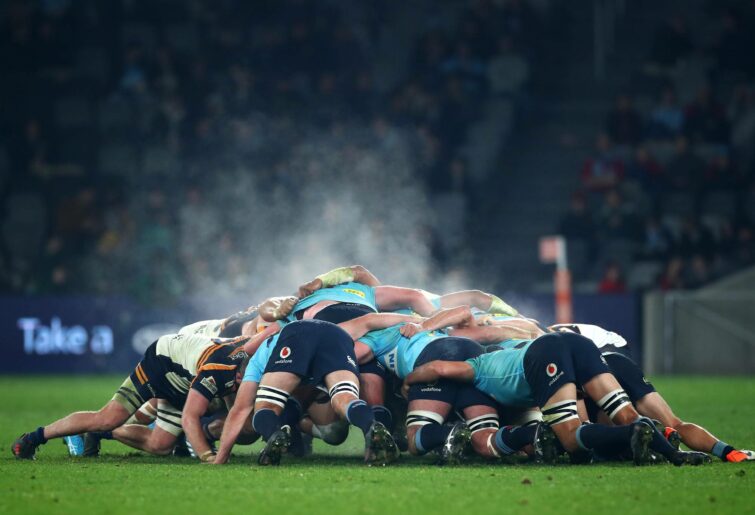Well, as far as opening rounds go, I’ll take one like we’ve just had every year for the next decade, thanks.
A couple of thrillers, a couple of blowouts, some statement wins of intent, a couple of massive second halves, a bit of heartbreak, and yes, a couple of teams left licking their wounds.
You can’t ask for much more in a Round 1.
Some games were better than others, obviously, but the overall read of the room through the socials and the online forums was that the moves to reduce the so-called ‘dead time’ in games did have an impact, and there was an expectation that ball in play (BIP) time felt like it had increased relative to what we were used to last season.
‘Felt’ is the key word in that last sentence. I must agree with the sentiment, that it did feel like the ball was in play more across the weekend, but I have no way of quantifying that.
BIP stats are kept somewhere but are rarely made public unless specifically sort for an analysis story in print or on TV. And I sure as hell don’t have the patience to watch six games a weekend with a stopwatch.
But in truth, the actual BIP figure from this weekend is immaterial. It doesn’t matter if the actual number is up by two seconds on last year’s average, or 20 seconds, or even two minutes.
In fact, it doesn’t even matter whether it’s increased at all.
Because if you’ve watched a game and felt on full-time that the game had a good flow, had plenty of ball in play, didn’t stop and start too much, then that’s all that matters.
If viewers and spectators feel like they’ve got more rugby for their buck on fulltime, then whether they actually have or not is irrelevant. Their perception will be that they’ve watched an enjoyable game, and will be more likely tell more people what they’ve missed, than if they watched a dour arm-wrestle.

(Photo by Cameron Spencer/Getty Images)
Obviously, if the numbers in time reflect an increased BIP time, then that’s great, and will no doubt be used as the justification for making the variations to the laws that have been made.
Until then though, let the people think for themselves!
In practicality, there were plenty of examples of the shot clocks being put to use, and the desire to move the game along being encouraged by the on-field officials.
Both Ben O’Keeffe and Nic Berry could be heard having regular discussions with forwards about the set piece time limitations on Friday night, while Angus Gardner was clear in his instruction in Townsville on Saturday, often heard explaining to waiting packs, “mark is made, shot clock has started”.
Damon Murphy pinged Melbourne Rebels scrumhalf Ryan Louwrens early for taking more than the allowed five seconds at the back of a ruck in the late game in Perth, and lo and behold, didn’t have to for the rest of the game.
On that particular one, it’s hard to escape the irony of stopping the game because someone didn’t play on quickly enough.
Post-match on Friday night, Brumbies skipper Allan Alaalatoa made mention that it was noticeable that scrums were being packed quicker, and his coach Stephen Larkham admitted that they came awfully close to blowing the 30-second limit in one lineout.
Presumably, this was from their own timing and we’ll have to take his word for it, in lieu of anything visible and meaningful for spectators and viewers.
Waratahs coach Darren Coleman asked hypothetically but rather pointedly whether all set pieces were formed in time, so presumably again, his stopwatch must have glowed red a couple of times.
The Friday night games certainly drew the most discussion around speed of play and flow of game (and how noticeably improved both were) and how clean the rucks were, and that’s probably to be expected as the first games back after a few months off.
It felt to me that the both of the Friday night winners were able to control the ruck tempo as they skipped away in the second half.
In the case of the Chiefs, you do have to wonder if that was down to the Crusaders’ traditional slow start to a season, or whether it’s something more concerning for the red and black. And that’s not to take anything away from the Chiefs’ breakdown work.
Coleman was left to lament New South Wales’ inability to compete with the Brumbies’ ruck work through the second half, noting it was an obvious area of improvement for Round 2.
The Waratahs did look to have more connection through their midfield however, with their centres certainly more prominent. Mind you, given the Brumbies scored two of their three tries on either wing – and arguably should have had a third – that apparent lack of flow certainly didn’t stop them going wide.
It all added to the perception of the viewer and the spectator, too.
Two teams playing with intent, speed and skill, highlighting exactly the kind of rugby the respective governing bodies were hoping for – and got – right across the opening weekend.
The reviews have been positive and whether perceptions are close to reality doesn’t matter in the slightest.
For the moment, Super Rugby Pacific is tugging on the right rein and with that comes one obvious challenge.
They simply must continue down this path and let fans and spectators believe they’re watching a superior product.
Do that, and maybe the future can be as bright as the pre-season bluster suggested it could be.





























































































